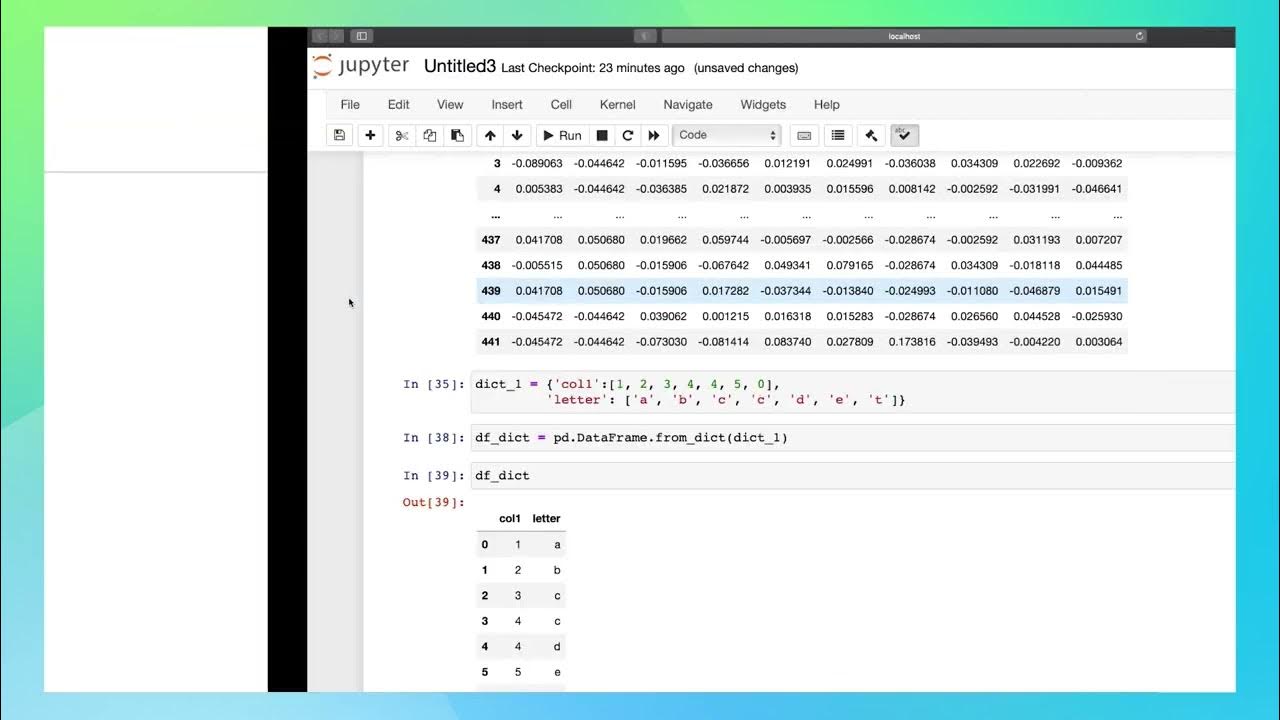Belajar Python [Dasar] - 43a - Latihan Dictionary Part 1
Summary
TLDRThis video script is a Python tutorial on creating a student registration system using dictionaries. The instructor demonstrates how to set up a template for student data, including fields like name, student ID, SKS (credits), and birth date. It also covers how to gather user input, populate the dictionary, and clear the console screen based on the operating system (Windows or Linux/Mac). The tutorial helps users understand how to manage nested data structures in Python, while providing an interactive experience with real-time inputs from users.
Takeaways
- 😀 Introduction to Python dictionaries and nesting for episode 43.
- 😀 The script focuses on creating a template dictionary for students using Python.
- 😀 The key Python concepts discussed include using `fromkeys` to create dictionaries.
- 😀 A template dictionary is first created for a student, including fields like name, SKS, and graduation status.
- 😀 The script demonstrates how to use the `datetime` module to add birth dates to the student template.
- 😀 The `fromkeys` method is used to create empty dictionaries that can be populated later.
- 😀 User input is collected dynamically to fill in the student dictionary (e.g., name, SKS, NIM, and birth date).
- 😀 The program employs Python’s input function to accept data for each field from the user.
- 😀 The code also uses the `os` library to clear the console screen for better readability when running the script multiple times.
- 😀 The script provides examples of how to handle the birth date input, including year, month, and day with basic validation.
- 😀 The script concludes with the creation of a full student dictionary with populated data, and demonstrates a clean and user-friendly execution of the program.
Q & A
What is the main focus of the tutorial in the video script?
-The main focus of the tutorial is teaching how to create and manipulate a Python dictionary, specifically using a template dictionary for student data and handling user input to populate that data.
What is the purpose of using a template dictionary in this script?
-The template dictionary provides a predefined structure for storing student data, making it easier to collect and organize the data later on. It serves as a blueprint for creating new student records.
How does the script handle user input for the student's data?
-The script collects user input for the student's name, NIM, SKS, graduation status, and birthdate using the `input()` function. This data is then stored in the template dictionary or a new dictionary created from it.
What is the role of the `datetime` library in this tutorial?
-The `datetime` library is imported to handle birthdate data. However, in this script, it is mentioned but not fully utilized, as the script directly collects year, month, and day values as integers for birthdate instead of using the `datetime` module.
Why does the script include a method to clear the console screen?
-The method to clear the console screen is included to make the user experience cleaner and more efficient, especially when the program is re-run. It uses the `os` library to clear the screen depending on the operating system (Windows or Unix-based).
How does the script differentiate between operating systems when clearing the screen?
-The script uses the `os.name` function to check the operating system. If it's 'nt' (Windows), it uses the `cls` command. For other systems (Unix-based like Linux and macOS), it uses the `clear` command.
What is the expected output after collecting all the user input in the script?
-The expected output is a dictionary containing the student's data, including their name, NIM, SKS, graduation status, and birthdate (year, month, and day), which is then printed for the user to see.
How does the script handle invalid input, such as a non-integer value for SKS or birthdate?
-The script does not currently handle invalid input explicitly. If the user enters a non-integer value for fields like SKS or birthdate, the program will throw a `ValueError`. Proper error handling would need to be added to manage such cases gracefully.
What is the significance of using the `bool()` function in the script?
-The `bool()` function is used to convert the user input for the graduation status (`lulus`) into a boolean value. This allows the script to correctly handle and store true/false values for whether the student has graduated or not.
What improvements could be made to the script for better usability?
-The script could be improved by adding error handling to validate user inputs (e.g., ensuring that the SKS and birthdate values are integers), providing clearer prompts for the user, and implementing more user-friendly data validation for fields like birthdate (ensuring valid dates).
Outlines

Cette section est réservée aux utilisateurs payants. Améliorez votre compte pour accéder à cette section.
Améliorer maintenantMindmap

Cette section est réservée aux utilisateurs payants. Améliorez votre compte pour accéder à cette section.
Améliorer maintenantKeywords

Cette section est réservée aux utilisateurs payants. Améliorez votre compte pour accéder à cette section.
Améliorer maintenantHighlights

Cette section est réservée aux utilisateurs payants. Améliorez votre compte pour accéder à cette section.
Améliorer maintenantTranscripts

Cette section est réservée aux utilisateurs payants. Améliorez votre compte pour accéder à cette section.
Améliorer maintenantVoir Plus de Vidéos Connexes

Coding Exercise for Beginners in Python with solution | Exercise 23 | Python for Beginners #lec68

Dataframes Part 02 - 01/03

Using MATLAB with Python

Tutorial 7- Python Sets, Dictionaries And Tuples And Its Inbuilt Functions In Hindi

Membuat Program Kasir Sederhana di Python | Algoritma Kasir Menggunakan Python Program Diskon Python

Dictionary
5.0 / 5 (0 votes)
